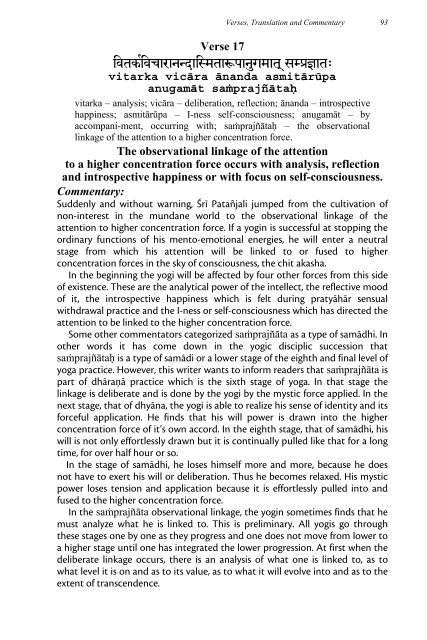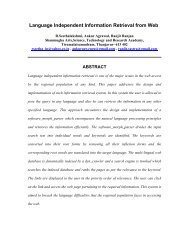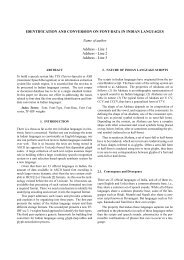You also want an ePaper? Increase the reach of your titles
YUMPU automatically turns print PDFs into web optimized ePapers that Google loves.
Verses, Translation and Commentary 93<br />
Verse 17<br />
ivtkRivcaranNdaiSmtaêpanugmat! sMà}at><br />
vitarka vicāra ānanda asmitārūpa<br />
anugamāt saṁprajñātaḥ<br />
vitarka – analysis; vicāra – deliberation, reflection; ānanda – introspective<br />
happiness; asmitārūpa – I-ness self-consciousness; anugamāt – by<br />
accompani-ment, occurring with; saṁprajñātaḥ – the observational<br />
linkage of the attention to a higher concentration force.<br />
The observational linkage of the attention<br />
to a higher concentration force occurs with analysis, reflection<br />
and introspective happiness or with focus on self-consciousness.<br />
Commentary:<br />
Suddenly and without warning, Śrī Patañjali jumped from the cultivation of<br />
non-interest in the mundane world to the observational linkage of the<br />
attention to higher concentration force. If a yogin is successful at stopping the<br />
ordinary functions of his mento-emotional energies, he will enter a neutral<br />
stage from which his attention will be linked to or fused to higher<br />
concentration forces in the sky of consciousness, the chit akasha.<br />
In the beginning the yogi will be affected by four other forces from this side<br />
of existence. These are the analytical power of the intellect, the reflective mood<br />
of it, the introspective happiness which is felt during pratyāhār sensual<br />
withdrawal practice and the I-ness or self-consciousness which has directed the<br />
attention to be linked to the higher concentration force.<br />
Some other commentators categorized saṁprajñāta as a type of samādhi. In<br />
other words it has come down in the yogic disciplic succession that<br />
saṁprajñātaḥ is a type of samādi or a lower stage of the eighth and final level of<br />
yoga practice. However, this writer wants to inform readers that saṁprajñāta is<br />
part of dhāraṇā practice which is the sixth stage of yoga. In that stage the<br />
linkage is deliberate and is done by the yogi by the mystic force applied. In the<br />
next stage, that of dhyāna, the yogi is able to realize his sense of identity and its<br />
forceful application. He finds that his will power is drawn into the higher<br />
concentration force of it’s own accord. In the eighth stage, that of samādhi, his<br />
will is not only effortlessly drawn but it is continually pulled like that for a long<br />
time, for over half hour or so.<br />
In the stage of samādhi, he loses himself more and more, because he does<br />
not have to exert his will or deliberation. Thus he becomes relaxed. His mystic<br />
power loses tension and application because it is effortlessly pulled into and<br />
fused to the higher concentration force.<br />
In the saṁprajñāta observational linkage, the yogin sometimes finds that he<br />
must analyze what he is linked to. This is preliminary. All yogis go through<br />
these stages one by one as they progress and one does not move from lower to<br />
a higher stage until one has integrated the lower progression. At first when the<br />
deliberate linkage occurs, there is an analysis of what one is linked to, as to<br />
what level it is on and as to its value, as to what it will evolve into and as to the<br />
extent of transcendence.










